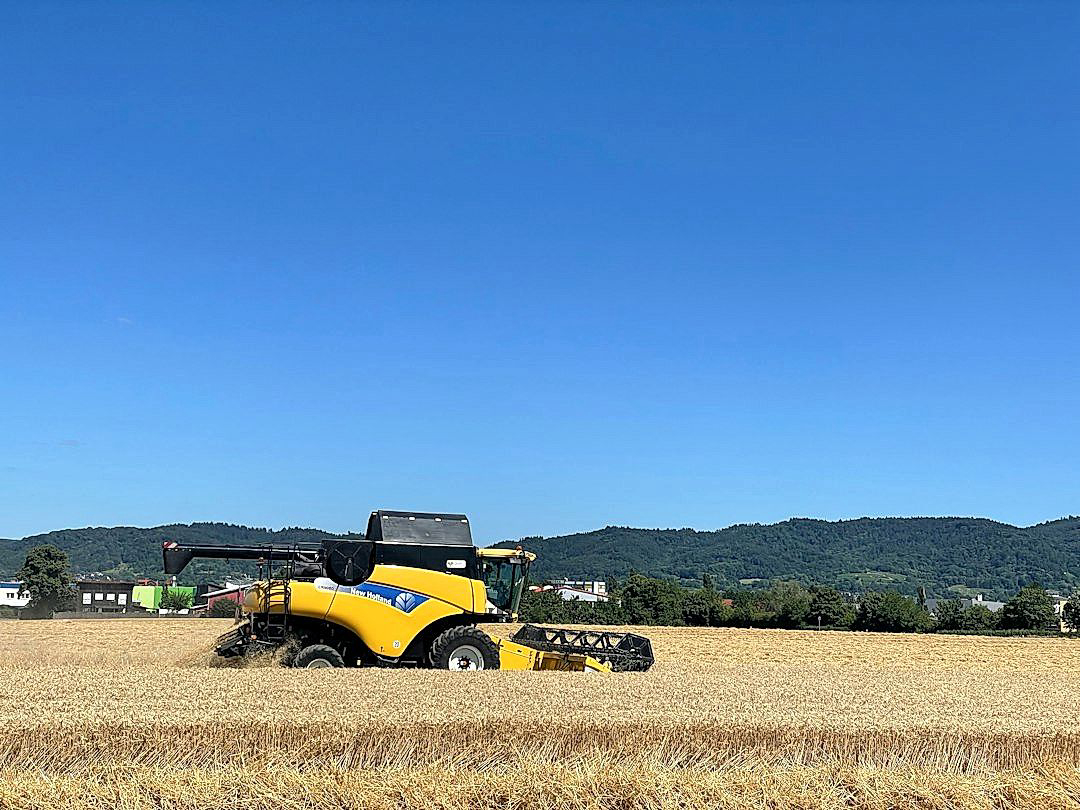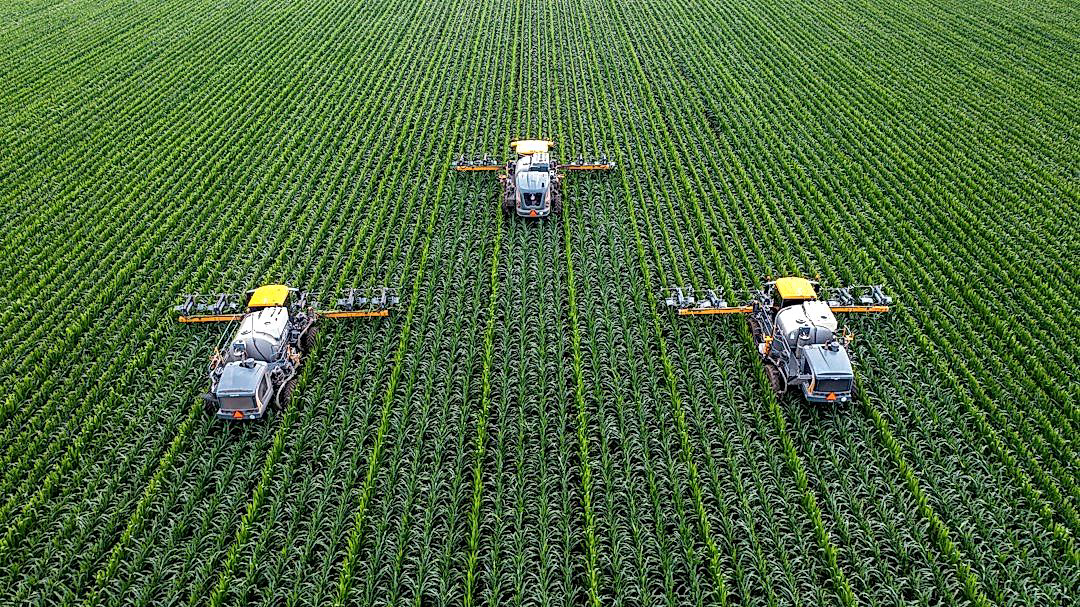The global demand for food is growing exponentially.
As the planet’s population continues to expand, finding improved ways to cultivate crops is crucial.
One of the key factors that determine the success of crop cultivation is soil health.
By optimizing the conditions of the soil, we can critically improve both the quantity and quality of crop yield.
Today’s piece will discuss some of the latest soil health innovations designed to address this essential factor in agriculture.
It will focus on recent advancements and their implications for producing healthier and more bountiful harvests.
Contents
- Soil Health Innovations For Better Crops
- 1. Cover Crops for Soil Fertility Improvement
- 2. Microbial bio-fertilizers for nutrient enrichment
- 3. Precision Agriculture for Optimized Fertilizer Use
- 4. Rotational Grazing for Soil Compaction Reduction
- 5. Organic farming for enhanced soil biodiversity
- 6. Biochar Application for Carbon Sequestration
- 7. Soil sensors for real-time health monitoring
- The Bottom Line
Soil Health Innovations For Better Crops
1. Cover Crops for Soil Fertility Improvement
The use of cover crops is a burgeoning soil health innovation that aids in improving fertility and all-round soil wellness.
Typically, farmers plant cover crops during off-season periods when the soil would otherwise be left bare.
Primarily, these crops serve to provide a protective cover for the soil, thereby preventing detrimental soil erosion.
Alongside preventing erosion, cover crops also work in enhancing soil fertility and structure.
Their ability to fix atmospheric nitrogen into the soil is profoundly beneficial as it provides a natural source of nitrogen for following crop cycles, without the need for synthetic fertilizers.
Apart from nitrogen fixation, these crops also increase soil organic matter through their decaying biomass, enhancing soil nourishment and fertility.
This increment in organic material also helps enhance soil water retention, a crucial quality for healthy crop growth.
Moreover, cover crops can assist in breaking down compacted soil layers, ensuring a permeable soil structure that allows water and nutrients to reach deeper root systems more efficiently.
Another advantage includes their aid in managing soil pests, as certain cover crops can deter harmful soil pests or disrupt their life cycles.
Scientific studies highlight the role of cover crops in supporting biodiversity below the ground by providing an environment conducive for beneficial insects and soil microorganisms.
Weather extremes such as droughts or heavy rainfall events can significantly damage the health of exposed soils, but with a layer of cover crops, the impact is drastically mitigated.
Furthermore, evidence suggests that cover crops could play a role in climate change mitigation, by sequestering carbon in the soil.
Despite these many benefits, the successful establishment and management of cover crops require appropriate planning and understanding of regional agronomic conditions.
Different cover crop species may also offer distinct benefits, and hence, the choice of species should align with the desired soil improvement goals.
In essence, the use of cover crops demonstrates a pioneering shift in agriculture – one that favors sustainable practices to enhance and maintain soil health, creating a more resilient platform for crop production.
2. Microbial bio-fertilizers for nutrient enrichment
Microbial bio-fertilizers are a groundbreaking innovation in soil health that aims to improve crop productivity and sustainability.
Comprising of beneficial bacteria and fungi, these microbial bio-fertilizers enhance soil fertility by reestablishing nutrient cycles.
These microscopic organisms are responsible for fixing atmospheric nitrogen into a form that plants can easily use, thereby helping in nutrient enrichment of the soil.
Microorganisms like Rhizobium, Azotobacter, and Azospirillum are commonly used in this innovation due its their ability to stimulate plant growth and bolster root development without the need for synthetic fertilizers.
Microbial bio-fertilizers basically act as natural nutrient factories within the soil, converting inert compounds into forms that are readily available for plant uptake.
Through these natural processes, microbial bio-fertilizers contribute to improved nutrient assimilation, optimizing the nutrient availability in the soil for plants.
Beyond enriching the soil with nutrients, these bio-fertilizers also aid in the suppression of soil-borne diseases and pests.
They can exert biocontrol effects by secreting certain chemicals or enzymes that inhibit pathogens, increasing the overall resilience of the cropping system.
This approach not only curbs the dependency on chemically synthesized fertilizers but also reduces environmental pollution due to minimal leaching of nutrients into water bodies.
However, the success of microbial bio-fertilizers lies in their effective application which can be influenced by several factors including soil type, crop variety, and environmental conditions.
It is, therefore, starting to become crucial for farmers and agribusinesses to invest in effective inoculation methods and management strategies to maximise the potential of these biological inputs.
Guidelines on the appropriate storage, handling and use of these bio-fertilizers are rapidly becoming an essential aspect of modern, sustainable farming.
Technologies such as precision agriculture can also be integrated to make the most out of microbial bio-fertilizer application.
Overall, the incorporation of microbial bio-fertilizers represents a step forward in sustainable farming, promising not only to boost crop productivity, but also to maintain and enhance soil health over time.
Innovative soil health techniques like the use of microbial bio-fertilizers can transform the face of agriculture, potentially ensuring future food security.
3. Precision Agriculture for Optimized Fertilizer Use
Precision agriculture represents a crucial innovation, significantly contributing to soil health and, by extension, the improvement of crop yield.
This modern farming practice utilizes advanced technologies to assess and understand variations within fields, aiding farmers in making more informed decisions about crop management.
Precision farming fosters optimized fertilizer use, reducing waste and promoting greener, more sustainable practices.
Data collected from tools such as GPS, remote sensing devices, and Geographic Information Systems (GIS) offer critical insights into different aspects of a field’s health.
This data can help in determining the appropriate quantity and timing for fertilizer application, significantly cutting down on overuse and environmental impact while still ensuring healthy crops.
For instance, through soil sampling and testing, farmers can obtain in-depth knowledge of their field’s nutrient profile.
This includes essential elements – nitrogen, phosphorus, and potassium levels, and other necessary micronutrients.
By understanding these soil properties, digital prescription maps can be created to guide precise fertilizer application, reducing waste, and optimizing resource use.
This technology-driven method also significantly contributes to regulated soil acidification, a critical factor in maintaining soil health.
By applying only necessary nutrients in the required areas, precision farming minimizes the risk of creating overly acidic soils caused by excessive fertilizer application.
Moreover, precision agriculture assists in combatting certain economic constraints faced by farmers.
With the optimized use of fertilizers, farmers can reduce costs, increase productivity, and make farming more profitable.
Yet, adoption of precision farming does come with its challenges like high implementation costs and the need for technical know-how.
However, the long-term benefits far outweigh the initial costs, improving not just soil health but also overall agricultural sustainability.
Educating farmers about the benefits of these technological innovations and providing them with apt training can help in the widespread adoption of precision agriculture.
In the quest to ensure better crop yield and sustainable farming, precision agriculture indeed offers an innovative and promising solution.
4. Rotational Grazing for Soil Compaction Reduction
As the name suggests, rotational grazing involves moving livestock around in different parts of the pasture, allowing for time in-between to let the soil rest and rejuvenate.
This method can help drastically reduce soil compaction, a common problem in areas that have heavy livestock traffic, because it minimizes the time that animals spend in one place, thereby reducing the pressure on the soil.
Keep in mind that soil compaction negatively affects the soil structure, reducing porosity and subsequently limiting the soil’s ability to hold and transmit water, air, and nutrients effectively.
It is clear that over time, the negative impact on plant growth and agricultural productivity can be substantial, which is one of the many reasons soil health innovations like rotational grazing are worth considering.
Incorporating rotational grazing into farming practices can be a game changer, as it has shown potential not only for improving soil health and crop yields but also for contributing to the sustainability of agricultural systems.
There are various ways to implement this method of grazing, but they all largely depend on the specific needs of the farm, such as the type of soil, the climate, and the kind of livestock.
Factors such as the suitable rest period for the soil, the optimal livestock density, and the ideal pasture size should be considered to optimize the benefits of rotational grazing.
Importantly, the adoption of rotational grazing necessitates a systems thinking approach—considering the farm as a whole system where livestock management and soil health are closely interrelated.
It is not only beneficial for the improvement of soil health, but it also has implications on other aspects of farming, such as livestock health and welfare, biodiversity, and greenhouse gas emissions.
For instance, studies have shown that rotational grazing can lead to higher livestock productivity due to improved forage quality and quantity.
It also has the potential to increase the biodiversity of pasture ecosystems, providing a habitat for a variety of plants and wildlife species.
Moreover, by improving soil health, it enhances the soil’s capacity to sequester carbon, thus contributing to the effort to mitigate climate change.
Rotational grazing is a practice steeped in tradition yet forward-thinking in its benefits to soil health, the broader ecosystem and sustainable agriculture.
Its potential contribution to crop yield improvement, sustainability, and even social challenges like climate change means it deserves a spotlight when discussion soil health innovations for better crops.
5. Organic farming for enhanced soil biodiversity
One of the significant innovations in soil health is the use of organic farming methods for the enhancement of soil biodiversity.
Soil biodiversity, referencing the variance of organisms residing in the soil, plays a critical role in maintaining healthy soil and in turn, cultivation of better crops.
Organic farming aids in fostering this biodiversity by abstaining from the use of artificial or chemically synthesized fertilizers and pesticides.
Through maintaining the natural balance of soil constituents, organic farming provides a conducive environment for a wide array of microorganisms, vital to soil health.
These microorganisms include bacteria, fungi, protozoa, and nematodes, each playing a unique role, yet collectively contributing to the overall soil fertility.
Not only do these organisms help in organic matter decomposition, releasing essential nutrients for plant uptake, but some also form beneficial symbiotic relationships with the plant roots, facilitating enhanced nutrient absorption.
Composting, a common practice in organic farming, serves as a source of food for these microorganisms, thereby promoting their proliferation.
The use of natural crop protection methods, such as the inclusion of plant species that repel pests, not only ensures the safety of these beneficial organisms but also aids in pest control.
Furthermore, the use of cover crops and crop rotation in organic farming contributes to soil biodiversity as different plants favor different types of microorganisms.
The practice of leaving fields fallow during off-seasons allows the soil to rejuvenate naturally, enhancing its biological activity.
The use of organic farming for better crop production is therefore highly dependant on a detailed understanding of soil biology and the intricate web of interactions therein.
While the process may be slow, the rewards are long-lasting and sustainable, leading to a reduced need for external inputs in the form of fertilizers and plant protection chemicals.
A significant challenge is ensuring that organic farming is made both practical and profitable for farmers, which necessitates the investment in research and development based initiatives in this arena.
All in all, organic farming emerges as a promising soil health innovation, underlining the importance of biodiversity in the soil ecosystem for reaping high-quality crop yields.
6. Biochar Application for Carbon Sequestration
Carbon sequestration is an important aspect of modern agriculture, especially given the current global emphasis on reducing carbon footprints and mitigating climate change impacts.
Biochar has emerged as a promising soil amendment for the agricultural sector, designed to enhance soil productivity while also providing carbon sequestration benefits.
The process of biochar production occurs through pyrolysis, a method that transforms organic waste material into a stable, carbon-rich substance.
One of the distinctive properties of biochar is its high porosity, which significantly aids in increasing soil fertility by improving water retention, reducing soil acidity, and enhancing nutrient availability.
Importantly, biochar sequesters carbon in the soil, trapping greenhouse gases and consequently reducing CO2 emissions.
The aforementioned process makes biochar a valuable tool for carbon sequestration in agriculture, contributing to the fight against climate change.
Additionally, biochar application also improves the soil’s resilience to stress factors such as drought and diseases.
By promoting increased crop productivity and healthy soil biodiversity, biochar application forms a critical part of sustainable and productive farming systems.
Beyond these direct benefits, recent research also highlights the potential of biochar in rehabilitating degraded soils and reducing the leaching of harmful chemicals and pollutants into groundwater reserves.
Moreover, the use of biochar is in itself a form of recycling agricultural waste, thus contributing to waste management effectiveness in the agricultural sector.
Further exploration and developments in biochar production could also potentially create new job opportunities within the renewable energy sector.
However, despite the many advantages of biochar, its application remains limited and localized, mainly due to challenges related to cost, allowable feedstocks, and production scalability.
It is therefore crucial to pursue further research and invest in advancements that can facilitate the broader adoption of biochar as a soil amendment for carbon sequestration.
Efforts to increase farmers’ knowledge and awareness about the benefits and methodology of biochar use is another area where significant improvements can be made.
Ultimately, the role of biochar in carbon sequestration represents a noteworthy innovation in the journey towards healthier soils and better crop yields.
7. Soil sensors for real-time health monitoring
Soil health monitoring is an integral part of agriculture that deeply influences crop yield and soil quality.
Recent advancements in technology have led to the development of various types of soil sensors specifically designed to monitor soil health in real time.
These sensors help farmers to accumulate precise information about the current status of their soil, supporting them in making informed decisions about fertilizer application, watering, and other agricultural practices.
Through this data, the soil sensors help to optimize the use of resources, such as water and fertilizers, leading to sustainable farming and preventing needless overworking of the soil.
Soil sensors serve as the true eye-opener to the hidden world beneath the topsoil, offering crucial knowledge about various soil conditions like nutrient levels, soil moisture, pH level, and more.
A key feature of these sensors is their ability to provide real-time data, which means farmers can monitor their soil health on an ongoing basis and identify any potential issues before they become problematic.
This capacity for real-time monitoring allows for immediate action to be taken when necessary, reducing the potential for crop diseases and increasing the overall effectiveness of farming practices.
These sensors are not just beneficial for improving crop production, but they also contribute significantly to soil conservation efforts.
By providing such detailed information, they support farmers’ understanding and management of their soil, ensuring that it remains healthy and productive for generations to come.
Real-time soil health monitoring with the use of sensors also promotes the integration of precision agriculture, optimizing not only the use of fertilizers but overall farming resources and practices.
Additionally, these sensors are scalable, meaning they can be utilized on small family farms to large-scale commercial operations, making them a versatile tool for improving soil health across the board.
These devices, being technologically advanced, also feature integration with digital platforms, allowing farmers to monitor and control the data remotely.
This aspect further simplifies the process of soil health management, providing convenience, ease of use, and the ability to act promptly on the data provided.
Overall, soil sensors for real-time health monitoring represent an innovative tool in maintaining the health and productivity of soil for better crops.
As technology continues to advance, the potential benefits and impact of these sensors on agriculture are expected to increase.
The Bottom Line
Having examined numerous well-established and innovative strategies, it is evident that sustainable soil management is not only possible, but also highly beneficial.
Cover crops, bio-fertilizers, precision agriculture, and rotational grazing can all contribute to enhanced soil fertility and structure.
Organic farming offers a natural approach to boosting biodiversity, while the addition of biochar aids in the critical process of carbon sequestration.
Furthermore, the incorporation of soil sensors for real-time health monitoring can further ensure more precise and timely actions that would safeguard soil health.
As such, the holistic approach to soil management could be seen as an ideal path towards nature preservation, food sufficiency and ultimately, environmental sustainability.




